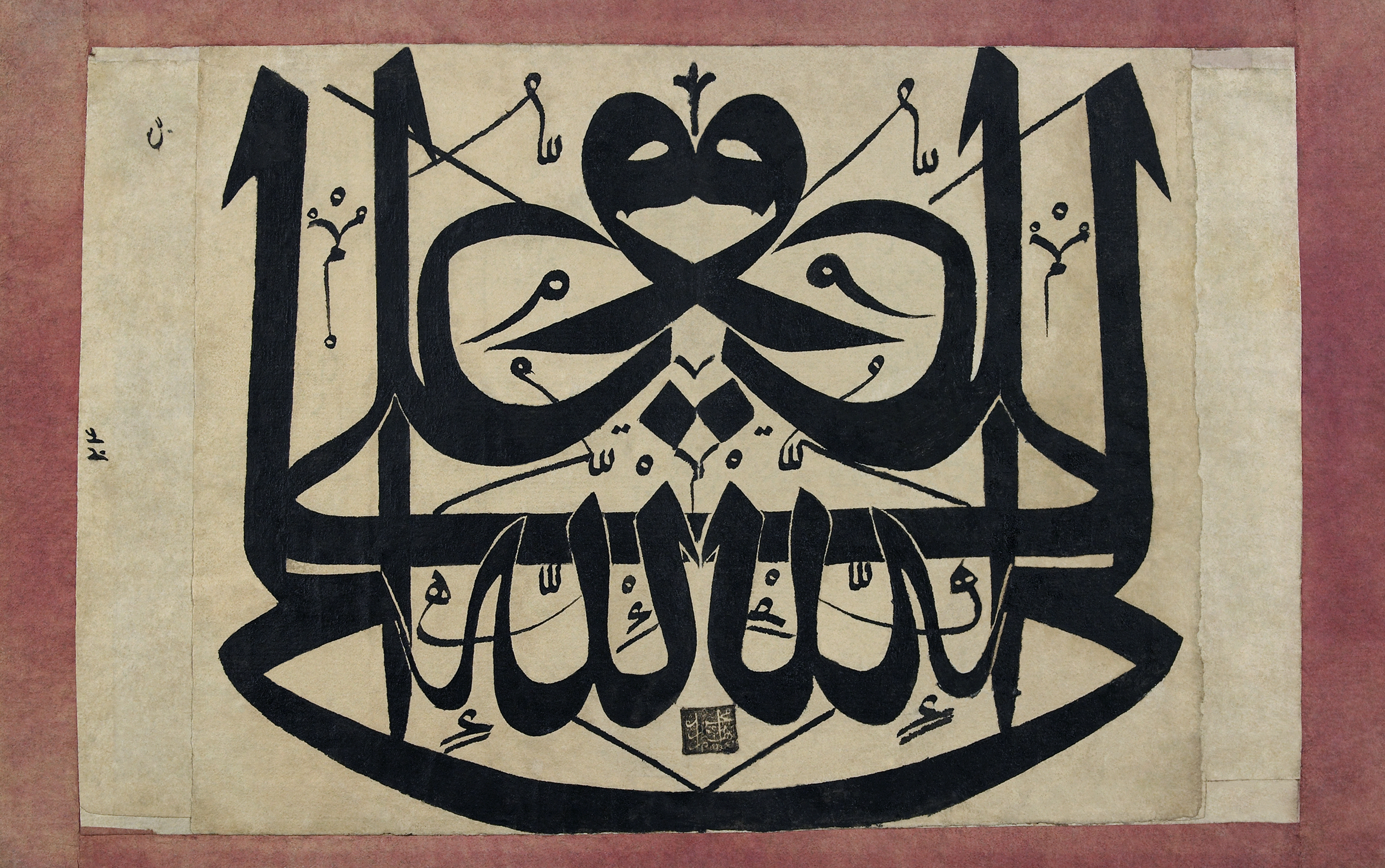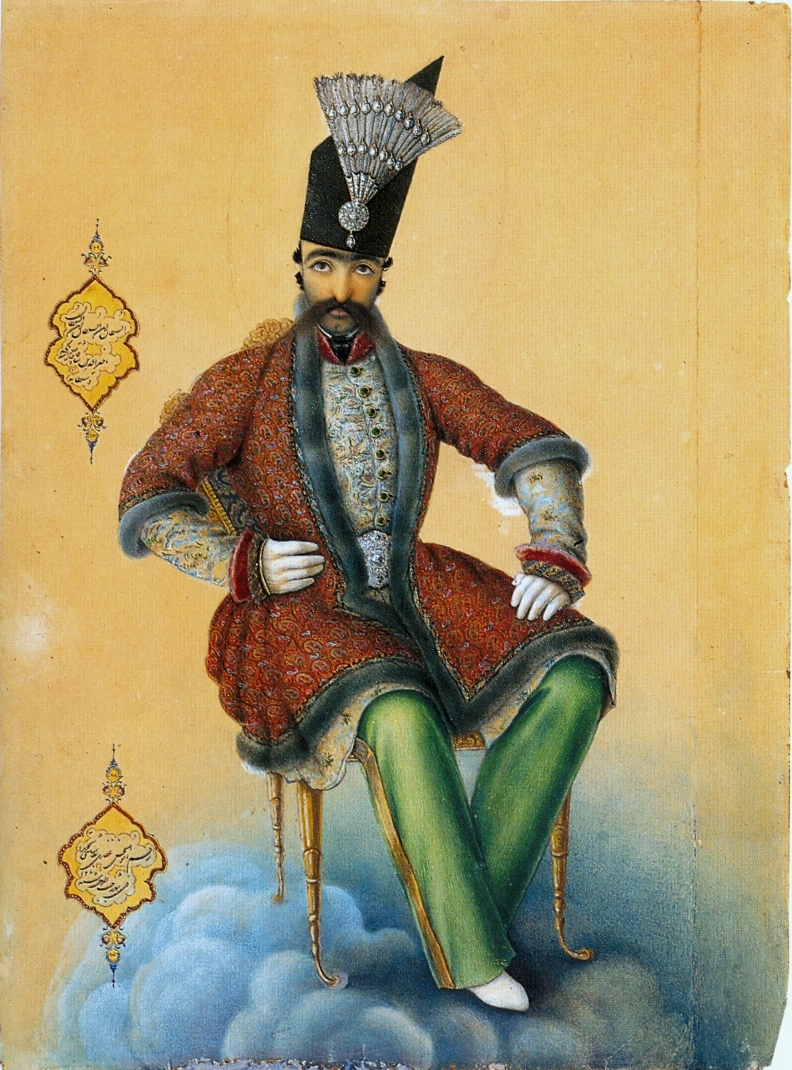|
Firuz Mirza
Firuz Mirza Nosrat ad-Dowleh Farmanfarma (; 1817 – 4 April 1886) was a Qajar prince, military commander and administrator in 19th-century Iran. He was the sixteenth son of Abbas Mirza. During the rule of his brother Mohammad Shah Qajar (), Firuz Mirza had a prosperous political and military career. This continued under his nephew Naser al-Din Shah Qajar (), who appointed him to multiple governorships and other leading positions. He was also a scholar and an expert with the kamancheh, a bowed string instrument. The current Firuz and Farmanfarmaian families are descended from the offspring of Firuz Mirza and his wife Homa Khanom, the granddaughter of Fath-Ali Shah Qajar (). One of them were their son Abdol-Hossein Farman Farma. Firuz Mirza's daughter Najm al-Saltaneh was the mother of Iranian politician Mohammad Mosaddegh Mohammad Mosaddegh (, ; 16 June 1882 – 5 March 1967) was an Iranian politician, author, and lawyer who served as the 30th Prime Minister of Iran from 19 ... [...More Info...] [...Related Items...] OR: [Wikipedia] [Google] [Baidu] |
Farmanfarma
Farmanfarma (, lit. "giver of an order") was a title with three different meanings in Safavid Iran, Safavid and Qajar Iran, Qajar Iran. #The Safavid shahs (kings) and their officials used ''farmanfarma'' (sometimes used interchangeably with ''farmanrava'' and ''farmanda'') as a common way to address European monarchs. #For notable governor-generals, ''farmanfarma'' was employed as a form of addressing them, either in place of or in addition to their official titles, ''hokmran'' and ''Wali (administrative title), vali''. In the late 19th century, for example, the Qajar princes Mozaffar ad-Din Shah Qajar, Mozaffar ad-Din Mirza, Mass'oud Mirza Zell-e Soltan, and Farhad Mirza were referred to as ''farmanfarma,'' ''hokmran'', and ''vali'' of Azerbaijan (Iran), Azerbaijan, Isfahan, and Fars province, Fars, respectively. #Five prince-governors and a tribal khan-governor received ''farmanfarma'' as a personal title. Fath-Ali Shah Qajar () started this tradition in 1797, when he gave the titl ... [...More Info...] [...Related Items...] OR: [Wikipedia] [Google] [Baidu] |
Qajar Dynasty
The Qajar family (; 1789–1925) was an Iranian royal family founded by Mohammad Khan (), a member of the Qoyunlu clan of the Turkoman-descended Qajar tribe. The dynasty's effective rule in Iran ended in 1925 when Iran's '' Majlis'', convening as a constituent assembly on 12 December 1925, declared Reza Shah, a former brigadier-general of the Persian Cossack Brigade, as the new ''shah'' of what became known as Pahlavi Iran. List of Qajar monarchs Qajar imperial family The Qajar Imperial Family in exile is currently headed by the eldest descendant of Mohammad Ali Shah, Sultan Mohammad Ali Mirza Qajar, while the Heir Presumptive to the Qajar throne is Mohammad Hassan Mirza II, the grandson of Mohammad Hassan Mirza, Sultan Ahmad Shah's brother and heir. Mohammad Hassan Mirza died in England in 1943, having proclaimed himself shah in exile in 1930 after the death of his brother in France. Today, the descendants of the Qajars often identify themselves as such and hol ... [...More Info...] [...Related Items...] OR: [Wikipedia] [Google] [Baidu] |
Abbas Mirza
Abbas Mirza (; 26 August 1789 – 25 October 1833) was the Qajar dynasty, Qajar crown prince of Qajar Iran, Iran during the reign of his father Fath-Ali Shah Qajar (). As governor of the vulnerable Azerbaijan (Iran), Azerbaijan province, he played a crucial part in the two wars against the Russian Empire (Russo-Persian War (1804–1813), 1804–1813 and Russo-Persian War (1826–1828), 1826–1828), as well as the Ottoman–Persian War (1821–1823), war of 1821–1823 against the Ottoman Empire. He is also recognized for leading Iran's first reform and modernization attempts with the help of his ministers Mirza Bozorg Qa'em-Maqam and Abol-Qasem Qa'em-Maqam. The conflict in the Azerbaijan and Caucasus regions between Iran and the Russian Empire was prevalent throughout the time that Abbas Mirza was growing up. On March 20, 1799, he was made the crown prince and given the title of ''Nayeb-al-saltana'' (viceregent). Around the same time, he was appointed the governor of Azerbaijan, w ... [...More Info...] [...Related Items...] OR: [Wikipedia] [Google] [Baidu] |
Abdol-Hossein Farman Farma
Abdol-Hossein Farman-Farma (; 1857 – November 1939) was a prominent Iranian prince of the Qajar dynasty and one of the most influential Iranian politicians in the Qajar Iran, Qajar era. Born in Tabriz to Firuz Mirza, Prince Nosrat Dowleh Firouz in 1857, he was the 16th grandson of the Qajar crown prince Abbas Mirza. He fathered 26 sons and 13 daughters by 8 wives. He lived to see four sons of his first wife die within his lifetime. Biography Prince Abdol-Hossein Farmanfarma was born to Nosrat Dowleh Firouz Mirza, Prince Nosrat Dowleh Firouz and Hajieh Homa Khanoum in 1858 in Tabriz, and was a grandson of the Qajar crown prince Abbas Mirza. He was extensively educated at home by private tutors in traditional subjects such as poetry, literature, mathematics, Arabic, and religion, along with modern sciences and Western languages. In 1878, at age 21, he continued his education at the Austro-Hungarian military mission in Persia, Austrian Military Academy in Tehran, where he dist ... [...More Info...] [...Related Items...] OR: [Wikipedia] [Google] [Baidu] |
Najm Al-Saltaneh
Badr al-Molouk Qajar or Malek Taj Firouz, (1853 – November 4, 1932) nicknamed ''Najm al-Saltaneh'' () was an Iranian princess of the Qajar dynasty and the founder of the first modern hospital in Tehran, Najmieh Hospital. Early life Najm was the daughter of Nosrat-od-Dowleh Firouz Mirza and Homa Khanum. Najm´s mother was her father's second wife. Sister of Prince Abdol-Hossein Farman Farma (1852–1939), a prominent politician of modern Iran. Najm´s half-sister Sorour ol-Saltaneh married Muzaffer al-Din Shah as his eleventh wife. According to the customs of the time when it came to women who belonged to royalty and the nobility, Najm, her mother and sisters would have lived secluded in the harem and andaruni (private inner quarters). Women of Najm's station received an education with a focus on administering a household and child-rearing, though she was taught to write in Persian most likely by a private tutor. Najm´s mother was deeply devout and would have seen that ... [...More Info...] [...Related Items...] OR: [Wikipedia] [Google] [Baidu] |
Twelver
Twelver Shi'ism (), also known as Imamism () or Ithna Ashari, is the Islamic schools and branches, largest branch of Shia Islam, Shi'a Islam, comprising about 90% of all Shi'a Muslims. The term ''Twelver'' refers to its adherents' belief in twelve divinely ordained leaders, known as the Twelve Imams, and their belief that the last Imam, Hujjat-Allah al-Mahdi, Imam al-Mahdi, lives in Occultation (Islam), occultation (''ghayba'') and will reappear as "the awaited Mahdi" (''al-Mahdi al-muntazar''). Twelver Shi'as believe that the Twelve Imams are divinely appointed as both spiritual and political successors to the Islamic prophet Muhammad, and that they possess special knowledge and authority to guide the Muslim community. According to theology of Twelvers, Twelver theology, the Twelve Imams are exemplary human individuals who rule over the Ummah, Muslim community (''Ummah'') with justice, and are able to preserve and interpret the Sharia, Islamic law (Sharia) and the Esoteric inter ... [...More Info...] [...Related Items...] OR: [Wikipedia] [Google] [Baidu] |
Qajar Iran
The Guarded Domains of Iran, alternatively the Sublime State of Iran and commonly called Qajar Iran, Qajar Persia or the Qajar Empire, was the Iranian state under the rule of the Qajar dynasty, which was of Turkic peoples, Turkic origin,Cyrus Ghani. ''Iran and the Rise of the Reza Shah: From Qajar Collapse to Pahlavi Power'', I. B. Tauris, 2000, , p. 1William Bayne Fisher. ''Cambridge History of Iran'', Cambridge University Press, 1993, p. 344, Dr Parviz Kambin, ''A History of the Iranian Plateau: Rise and Fall of an Empire'', Universe, 2011, p.36online edition specifically from the Qajar (tribe), Qajar tribe, from 1789 to 1925. The Qajar family played a pivotal role in the Unification of Iran (1779–1796), deposing Lotf 'Ali Khan, the last Shah of the Zand dynasty, and re-asserted Iranian sovereignty over large parts of the Caucasus. In 1796, Agha Mohammad Khan Qajar seized Mashhad with ease, putting an end to the Afsharid dynasty. He was formally crowned as Shah after his Batt ... [...More Info...] [...Related Items...] OR: [Wikipedia] [Google] [Baidu] |
Mohammad Shah Qajar
Mohammad Shah (; born Mohammad Mirza; 5 January 1808 – 5 September 1848) was the third Qajar ''shah'' of Iran from 1834 to 1848, inheriting the throne from his grandfather, Fath-Ali Shah. From a young age, Mohammad Mirza was under the tutelage of Haji Mirza Aqasi, a local dervish from Tabriz whose teachings influenced the young prince to become a Sufi-king later in his life. After his father Abbas Mirza died in 1833, Mohammad Mirza became the crown prince of Iran and was assigned with the governorship of Azarbaijan. After the death of Fath-Ali Shah in 1834, some of his sons including Hossein Ali Mirza and Ali Mirza Zel as-Soltan rose up as claimants to the throne. Mohammad Shah dismissed and executed his tactful premier, Abol-Qasem Qa'em-Maqam, and appointed his favourite, Haji Mirza Aqasi, as the grand vizier. The new shah's main goal was to reestablish the rule of the Iranian government in the rebellious city of Herat. In 1837 he marched to Herat and laid a futile sie ... [...More Info...] [...Related Items...] OR: [Wikipedia] [Google] [Baidu] |
Naser Al-Din Shah Qajar
Naser al-Din Shah Qajar (; ; 17 July 1831 – 1 May 1896) was the fourth Shah of Qajar Iran from 5 September 1848 to 1 May 1896 when he was assassinated. During his rule there was internal pressure from the people of Iran, as well as external pressure from the British empire and the Russian empire. He granted many concessions, most importantly the Reuter concession and the Tobacco concession. He allowed the establishment of newspapers in the country and made use of modern forms of technology such as telegraph, photography and also planned concessions for railways and irrigation works. Despite his modernizing reforms on education, his tax reforms were abused by people in power, and the government was viewed as corrupt and unable to protect commoners from abuse by the upper classes which led to increasing anti-governmental sentiments. He was assassinated when visiting a shrine in Rayy near Tehran. He was the first modern Iranian monarch who formally visited Europe and wrote of ... [...More Info...] [...Related Items...] OR: [Wikipedia] [Google] [Baidu] |
Kamancheh
The kamancheh (also kamānche or kamāncha) (, , , ) is an Iranian bowed string instrument used in Persian, Azerbaijani, Armenian, Kurdish, Georgian, Turkmen, and Uzbek music with slight variations in the structure of the instrument. The kamancheh is related to the rebab which is the historical ancestor of the kamancheh and the bowed Byzantine lyra. The strings are played with a variable-tension bow. In 2017, the art of crafting and playing with Kamantcheh/Kamancha was included into the UNESCO Intangible Cultural Heritage Lists of Azerbaijan and Iran. Name and etymology The word "kamancheh" means "little bow" in Persian (''kæman'', bow, and ''-cheh'', diminutive). The Turkish word kemençe is borrowed from Persian, with the pronunciation adapted to Turkish phonology. It also denotes a bowed string instrument, but the Turkish version differs significantly in structure and sound from the Persian kamancheh. There is also an instrument called ''kabak kemane'' lite ... [...More Info...] [...Related Items...] OR: [Wikipedia] [Google] [Baidu] |
Bowed String Instrument
Bowed string instruments are a subcategory of string instruments that are played by a bow (music), bow rubbing the string (music), strings. The bow rubbing the string causes vibration which the instrument emits as sound. Despite the numerous specialist studies devoted to the origin of bowing, the Bow (music)#Origin, origin of bowing remains unknown.Friedrich Behn, Musikleben im Altertum und frühen page 159 List of bowed string instruments Violin family * Cello (violoncello) * Pochette (musical instrument), Pochette * Viola (altviol, bratsche) * Violin (violino) * Double bass (contrabasso) ;Variants on the standard members of the violin family include: * Baroque violin * Cello da spalla * Five string violin * Hardanger fiddle * Kit violin * Kontra * Låtfiol * Lira da braccio * Octobass * Sardino * Stroh violin * Tenor violin Viol family (Viola da Gamba family) * Viol, Alto viol * Viol, Bass viol * Viol, Tenor viol * Viol, Treble viol ;Variants on the standard ... [...More Info...] [...Related Items...] OR: [Wikipedia] [Google] [Baidu] |
Fath-Ali Shah Qajar
Fath-Ali Shah Qajar (; 5 August 1772 – 24 October 1834) was the second Shah of Qajar Iran. He reigned from 17 June 1797 until his death on 24 October 1834. His reign saw the irrevocable ceding of Iran's northern territories in the Caucasus, comprising what is nowadays Georgia (country), Georgia, Dagestan, Azerbaijan, and Armenia, to the Russian Empire following the Russo-Persian Wars of Russo-Persian War (1804–1813), 1804–1813 and Russo-Persian War (1826–1828), 1826–1828 and the resulting treaties of Treaty of Gulistan, Gulistan and Treaty of Turkmenchay, Turkmenchay., page 728 These two treaties are closely tied to Fath-Ali Shah's legacy amongst Iranians, who often view him as a weak ruler. Fath-Ali Shah successfully reconstituted his realm from a mostly Turkic tribal khanship into a centralized and stable monarchy based on the old imperial design. At the end of his reign, his difficult economic problems and military and technological liabilities took Iran to the verge ... [...More Info...] [...Related Items...] OR: [Wikipedia] [Google] [Baidu] |







